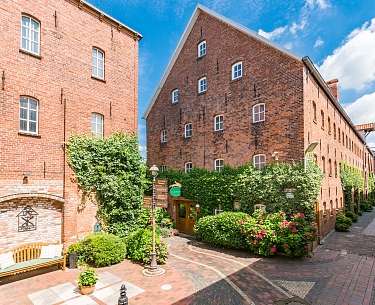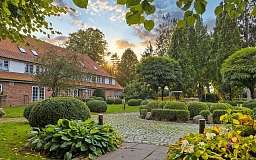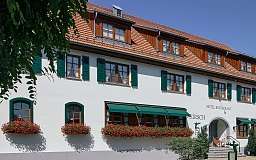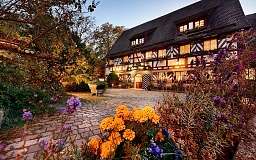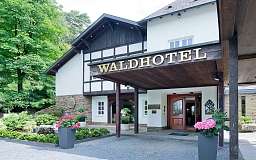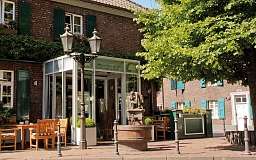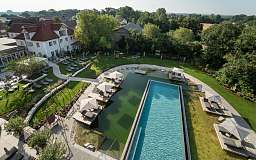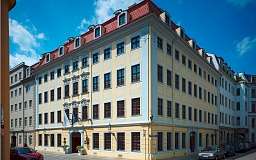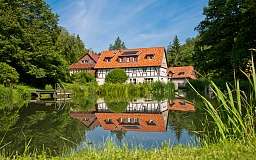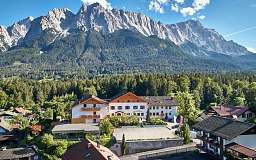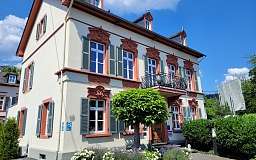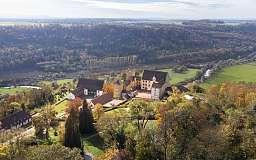Romantik Blog
Discover UNESCO World Heritage Sites in Germany - with Romantik Hotels.
Germany can look back on a fascinating history that has produced important buildings. Many of these buildings and sites are still well preserved today and have been declared UNESCO World Heritage Sites. Discover unique UNESCO destinations in Germany and our Romantik Hotels near historic UNESCO World Heritage Sites in our blog.

Roman history: Porta Nigra in Trier
The Porta Nigra in Trier is an impressive relic from Roman history, built in the 2nd century AD under Emperor Marcus Aurelius. Its name, "Black Gate", comes from the dark colour of the sandstone. As the best-preserved Roman city gate north of the Alps, the Porta Nigra is now a UNESCO World Heritage Site. Visitors can walk through the massive gates and explore the impressive architecture and history of this historic building.
Hotel tip:
The Romantik Hotel Zur Glocke in Trier is the perfect starting point for exploring the Porta Nigra..
UNESCO World Heritage Site in the Harz Mountains
The Harz Mountains are home to two sites that have been recognised by UNESCO as World Heritage Sites: Walkenried Monastery and the Rammelsberg mine. Walkenried Monastery, which was founded in 1127, was an important Cistercian centre in the region. The monks of the monastery played a decisive role in the cultivation and development of the surrounding landscape.
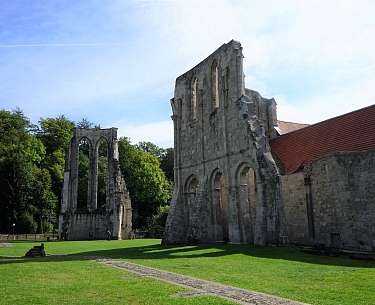
The monastery was not only a place of spirituality, but also an important economic factor thanks to the introduction of advanced agricultural methods. The imposing monastery complex bears witness to the architecture and craftsmanship of the medieval master builders. UNESCO recognised Walkenried Monastery as part of the World Heritage Site "Frontiers of the Roman Empire - Upper German-Raetian Limes".
Hotel tip:
The RoLigio® Wellness Resort Romantischer Winkel in Bad Sachsa is just a ten-minute drive from the UNESCO World Heritage Site of Walkenried Abbey and offers luxurious accommodation with wellness and Michelin-starred cuisine.
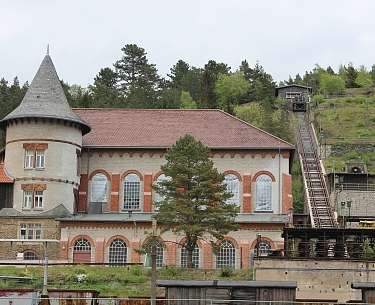
Rammelsberg Mine
The Rammelsberg mine in Goslar, Lower Saxony, is a UNESCO World Heritage Site with a rich mining history. The mining of lead, zinc and copper began here as early as the 11th century. The region was economically important as the metals were used for minting coins and weapons. The site is characterised by a complex system of tunnels and the mine played a central role until its closure in 1988. Today it is a museum that brings visitors closer to the history of mining and the life of the miners.
Hotel tip:
Just five minutes by car or a half-hour walk away, you can reach the Rammelsberg Mine World Heritage Site perfectly from the Alte Münze.

Bamberg Old Town
The UNESCO World Heritage town of Bamberg enchants visitors from all over the world. The charming old town with the Old Town Hall, bridges and historic half-timbered houses is characterised by medieval architecture, romantic alleyways and baroque buildings. Savour the unmistakable taste of Bamberg's famous smoked beer and discover the diverse gastronomic scene. Cultural highlights such as the Old Slaughterhouse and the E.T.A. Hoffmann Theatre offer entertainment for every taste.
Hotel tips:
Our Romantik Hotels in Nuremberg and Volkach are less than an hour's drive from Bamberg and offer a historic cityscape, delicious wines and green landscapes.
Mainau Island & prehistoric pile dwellings on Lake Constance
The flower island of Mainau, idyllically situated in Lake Constance, is a botanical paradise of international importance. Known for its colourful floral splendour, gardens and parks, the island offers a unique natural show all year round. Mainau is home to a wide variety of plants from all over the world. The parks combine artistic garden architecture with an abundance of flower species, including tulips, roses and exotic plants. Mainau is not only an aesthetic delight, but also a place for nature lovers and garden enthusiasts to relax amidst this floral splendour and admire the diversity of the plant world.
Another UNESCO World Heritage Site in Lake Constance are the prehistoric pile dwellings, which represent a unique archaeological site. These remains of human settlements date from the Neolithic to the Bronze Age and are a fascinating testimony to early human civilisations. The pile dwellings were built on wooden piles and include houses, paths and platforms. They provide an insight into the lives of our ancestors, their technologies and their relationship with the environment and show how people lived on Lake Constance thousands of years ago.
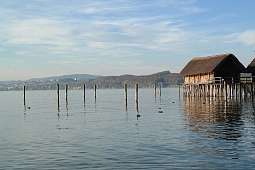
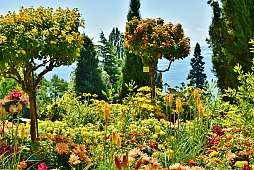

Hotel tips:
Discover our Romantik Hotels on Lake Constance - in Meersburg, Constance and Überlingen.
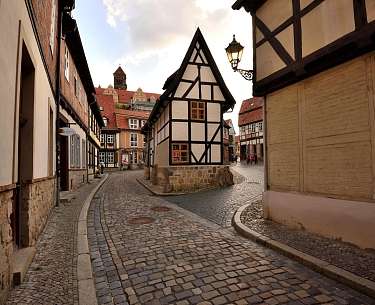
Quedlinburg
Enge Kopfsteinpflasterstraßen, historische Plätze und über 1.300 gut erhaltene Fachwerkhäuser, die teilweise mehrere Jahrhunderte alt sind, prägen das mittelalterliche Stadtbild Quedlinburgs im Harz. Die Stadt hat eine reiche Geschichte, die bis ins 9. Jahrhundert zurückreicht. Im Jahr 1994 wurde Quedlinburg von der UNESCO als Weltkulturerbe anerkannt.
Hotel tip:
The Romantik Hotel am Brühl is located directly in the historic centre of Quedlinburg.
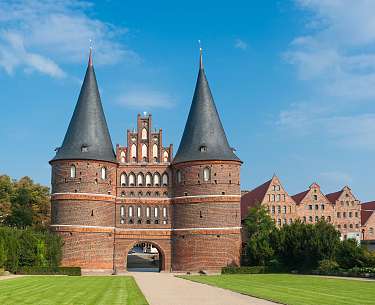
Hanseatic City of Lübeck
The Hanseatic city of Lübeck has been a UNESCO World Heritage Site since 1987. The UNESCO recognition recognises the well-preserved old town of Lübeck with its impressive brick Gothic architecture, historic buildings and the city wall as an outstanding example of a medieval trading town that flourished during the Hanseatic League. The Holsten Gate, built in the 15th century, is one of the most important German buildings and sights of the late Middle Ages and represents Lübeck's historical importance as a gateway to the Baltic Sea. Today, Lübeck attracts visitors from all over the world who want to explore its rich cultural heritage and well-preserved old town.
Hotel tip:
Discover our Romantik Hotel Friederikenhof - only a few minutes by car from Lübeck's old town and yet surrounded by greenery.
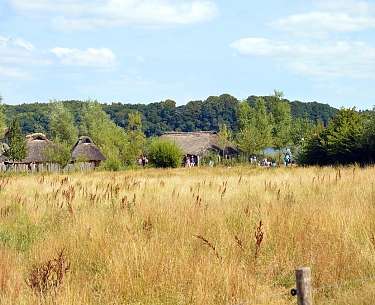
Viking Town Haithabu
Haithabu (Hedeby) is a UNESCO World Heritage Site that comprises the remains of an important Viking town on the Schlei in Schleswig-Holstein. The site was a flourishing trading town from the 8th to the 11th century and an important hub for the exchange of goods in the Viking Age. The remains of Haithabu offer insights into the life of the Vikings, their trading practices and maritime activities. The archaeological finds include well-preserved settlement structures, craft workshops, harbour facilities and trading sites.
Hotel-Tipp:
Just a few minutes' drive or an hour's walk from the Viking town of Haithabu, you can enjoy sophisticated cuisine and a large wellness area at the Romantik Hotel Waldschlösschen in Schleswig.
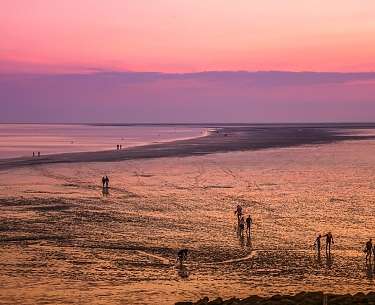
Wadden Sea - Low Tide & High Tide on the North Sea
The Wadden Sea is a unique natural landscape that stretches along the North Sea coast from the Netherlands to Germany and Denmark. This fascinating region is a nature reserve and was declared a UNESCO World Heritage Site in 2009. The Wadden Sea is characterised by the tides, which cause a change between high and low tide twice a day.
At low tide, the mudflats are exposed as a huge expanse of sand and silt that is home to numerous creatures. Mussels, worms and crabs are just some of the inhabitants that have adapted to life in the tidal area. The Wadden Sea is not only a habitat for numerous animal and plant species, but also an important resting and breeding area for migratory birds. Millions of birds stop off in the Wadden Sea on their journey between the breeding grounds in the Arctic and the wintering grounds in Africa and southern Europe.
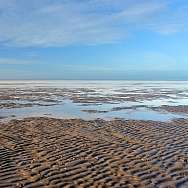


Tourists can explore the Wadden Sea on guided mudflat walks, where they can experience the fascinating ecosystem up close. During these hikes, they not only learn a lot about the flora and fauna, but also about the challenges that coastal protection and climate change pose for this unique region. The Wadden Sea is not only a natural wonder, but also a fragile ecosystem that needs to be carefully protected. Raising people's awareness of the importance of this unique habitat and sustainable measures are crucial to preserving the beauty and diversity of the Wadden Sea for future generations.
Romantik Hotels by the North Sea
Germany
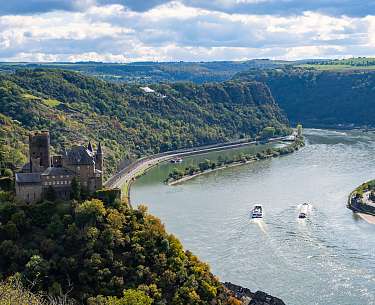
Upper Middle Rhine Valley
The UNESCO World Heritage Upper Middle Rhine Valley stretches for 65 kilometers along the Rhine between Bingen, Rüdesheim and Koblenz. This cultural landscape is known for its impressive scenery with steep vineyards, charming villages and numerous medieval castles such as Marksburg Castle and Rheinfels Castle. The valley is an important wine-growing region, especially for Riesling, and is rich in myths, including the legend of the Loreley. Sightseeing towns such as Rüdesheim and Koblenz offer historical and cultural attractions.
Hotel tip:
The Romantik Hotel Villa Sayn in the Middle Rhine Valley is located near the colorful butterfly garden at the princely castle and is ideal for exploring the romantically meandering Rhine region.
All Romantik Hotels in UNESCO World Heritage Sites Germany
Germany

Romantik Hotel
Chalet am Kiental
Post your comment
Comments
No one has commented on this page yet.
RSS feed for comments on this page RSS feed for all comments




